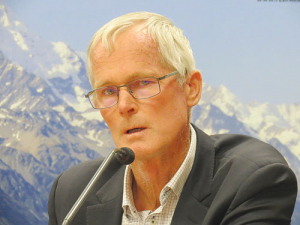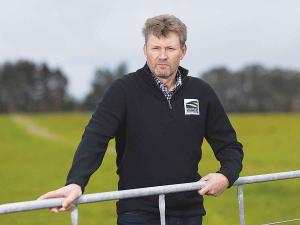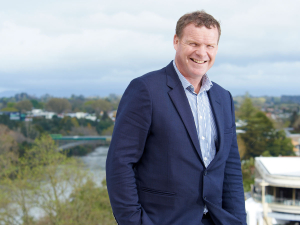"Robust discussions" are expected when farmers gather early next year to discuss alternatives to the Emissions Trading Scheme (ETS).
DairyNZ chairman Jim van der Poel anticipates farmers will offer "different positions and different options".
"At the end of the day, we will have to consolidate views and get agreement because not doing so will leave us in the ETS," he told Rural News.
Last week, the Primary Sector Climate Action Partnership (He Waka Eka Noa) released a discussion document with two key options for farmers to consider over the next three months.
The cross agri-sector partnership includes Beef + Lamb New Zealand, DairyNZ and Federated Farmers, as well as Government and iwi.
"It's critical we grab this opportunity and develop a credible alternative framework as the Government has already legislated to put agriculture into the NZ ETS if we don't," says van der Poel.
The Government has made it clear they will put agriculture into the ETS if the sector does not come up with a credible alternative.
The two options before farmers are the farm-level levy and processor-level hybrid levy options. Both take a split-gas approach, acknowledging short-lived gases like methane have a different warming impact to long-lived gases like carbon dioxide, and the price for methane will be separate and delinked from the carbon price.
Farmer meetings are being planned throughout the country in February to discuss the two options.
The NZ Government aims to cut biogenic methane emissions by 10% on 2017 levels by 2030 and by between 24 to 47% lower by 2050. Farmers believe the targets are too high.
Van der Poel agrees that most rural organisations would think that the targets shouldn't be too high.
"The Government sets the targets. I expect there will be robust discussions and a range of views among our farmers," he says.
Van der Poel claims there is also pressure from consumers who are demanding and willing to pay for food with lowers carbon footprint.
A more detailed information pack on the options will be released by the partnership early next year ahead of the roadshow. Farmers will be able to give their feedback online then too.
"It's hugely important farmers get involved and tell us what they think in February. We're committed to finding a solution that works for farmers and keeps the sector in control of where and how it uses funds for the benefit of farmers," says van der Poel.
Federated Farmers president Andrew Hoggard says his personal view is that there are some good points in both options - like rewarding eligible on-farm sequestration, split-gas approach and additional revenues invested back in agriculture.
However, he's worried about extra cost incurred by farmers.
B+LNZ chair Andrew Morrison says the framework farmers select should incentivise work underway on-farm including sequestration and riparian planting.
"The two options would ensure any revenue raised by the pricing system would go back into R&D for innovative solutions and support farmers' on-farm work to mitigate their warming impact," says Morrison.
"We're releasing the draft discussion document now so farmers have time to consider the options.
"At the roadshow meetings, we'll explain what the options mean for different farming systems, and most importantly answer questions and a hear farmers' views," says Morrison.
Option 1: Farm-level levy
This levy would calculate emissions using farm-specific data, and the farm would then pay a price for its net emissions. This option would reward eligible on-farm sequestration additional to that currently included in the ETS that could offset some of the cost of the emissions levy. Any additional revenue raised through the levy above the scheme costs would be invested back into the agricultural sector for further emissions reductions work and R&D.
Option 2: Processor hybrid levy
This levy would calculate emissions at the meat, milk, and fertiliser processor level, based on the quantity of product received from farms, or in the case of fertiliser, sold to farms. It would be paid at a processor level, and likely collected by the processor charging through to farmers based on the quantity of product processed, or fertiliser supplied. Farms (individually or in collectives) could choose to enter into an Emissions Management Contract (EMC) to get a payment for reducing emissions and/or for recognising sequestration on-farm.



















